#Ford Philippines
Explore tagged Tumblr posts
Text




Ford Ranger 4x4 Wildtrak 2023
#ford ranger#ford ranger wildtrak#ford philippines#vehicle#fordphilippines#ford#cabanatuan#philippines
0 notes
Text

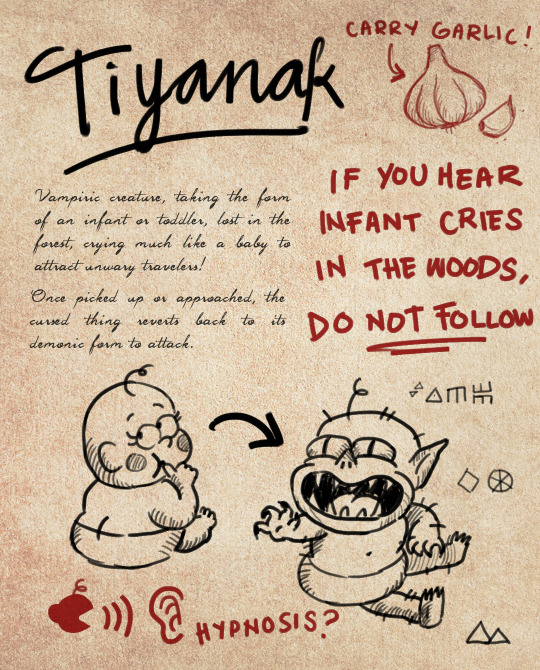

gravity falls.... but if it was set in the philippines (and the monsters are REAL scary) i guess this is also a nationality reveal? hello all 🇵🇭 enjoy these quick pinoy gravity falls doodles
#gravity falls#dipper pines#mabel pines#dipper#mabel#bill cipher#grunkle stan#grunkle ford#ford pines#stan pines#stanford pines#stanley pines#book of bill#gravity falls fanart#gravity falls... but pinoy!#artists on tumblr#digital art#digital illustration#philippines#philippine mythology#is this too niche#if there is an audience for this#well hello#uy pilipins#uy philippines#ill-ipino#filipino#gravity falls ph#filipino gravity falls#gravity falls au
502 notes
·
View notes
Text

Platoon (1986, Oliver Stone)
24/03/2024
Platoon is a 1986 film, written and directed by Oliver Stone, which deals with his time in Vietnam as a volunteer during the war and is inspired by the real experiences the director had between 1967 and 1971 during his military service.
The film won 4 Oscars out of 8 nominations and Oliver Stone was also awarded the Silver Bear in Berlin as best director. In 1998 the American Film Institute placed it in eighty-third place in the ranking of the one hundred best American films of all time, while ten years later, in the updated list, it dropped to eighty-sixth place. In 2019, it was chosen for preservation in the National Film Registry of the United States Library of Congress.
The bloodiest episode, as in many other films dealing with the Vietnam War, is inspired by the most atrocious event of that conflict, known to history as the My Lai massacre, in which American soldiers committed atrocities including rape of very young girls, indiscriminate killings of innocent civilians, destruction of the homes and resources of the inhabitants, believed to be allies of the Viet Cong, despite there being no evidence. From this perspective, the figure of the platoon commander, Lieutenant Wolfe, both for his inability to control his men and for other characteristics, can be traced back to the main person responsible for My Lai, the then US Army Lieutenant William Calley, convicted to several years of military detention for that very affair.
Due to an error by Lieutenant Wolfe, who gives wrong coordinates via radio, the platoon is decimated by friendly artillery.
In the last war action of his volunteer service, Chris escapes a deadly ambush by the Viet Cong who almost completely annihilate the platoon and the subsequent American bombing with napalm.
Initially Hollywood snubs the script as many producers are of the opinion that what three is to say about the Vietnam War has already been reported in highly successful films such as Apocalypse Now and The Deer Hunter, however the strength of Stone's script still attracts some producers who see enormous potential in him. He was then assigned to write a screenplay for another film, Stone accepted and wrote Midnight Express in 1977, thanks to which he won the Oscar for best non-original screenplay (first statuette for Stone) a fact that made all of Hollywood understand the Stone's enormous potential; it was therefore not difficult for him to find the producer to begin work on Platoon.
The film was shot, following the great example of Apocalypse Now, director Francis Ford Coppola's masterpiece, on the island of Luzon, in the Philippines, starting in February 1986. The film's production was almost canceled due to the political upheavals in country, due to Ferdinand Marcos, dictator of the country. Upon arrival in the Philippines, the cast members underwent a two-week course of intensive training by Dale Dye (former Marine captain during the Vietnam War and interpreter of Captain Harris), during which they had to dig trenches and suffer forced marches and night "ambushes".
#platoon#film#1986#oliver stone#vietnam#vietnam war#1967#1971#academy awards#berlin international film festival#berlin#1998#american film institute#AFI's 100 Years 100 Movies#2019#national film registry#library of congress#united states#My Lai massacre#William Calley#friendly fire#Napalm#apocalypse now#the deer hunter#midnight express#Academy Award for Best Adapted Screenplay#francis ford coppola#luzon#philippines#ferdinand marcos
20 notes
·
View notes
Text
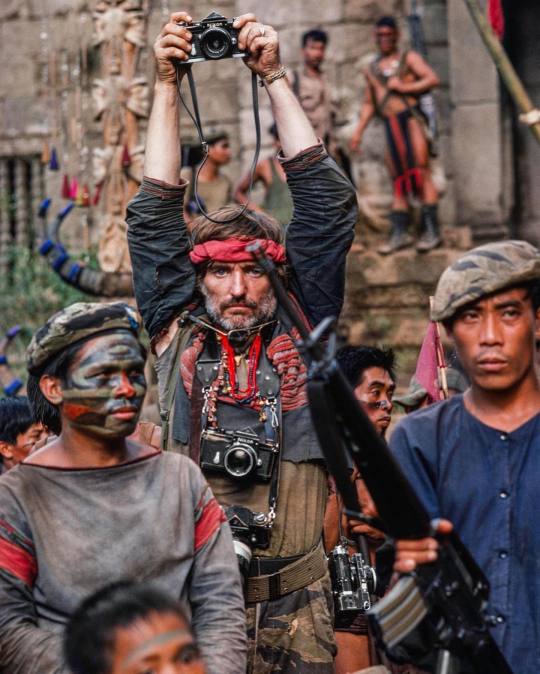

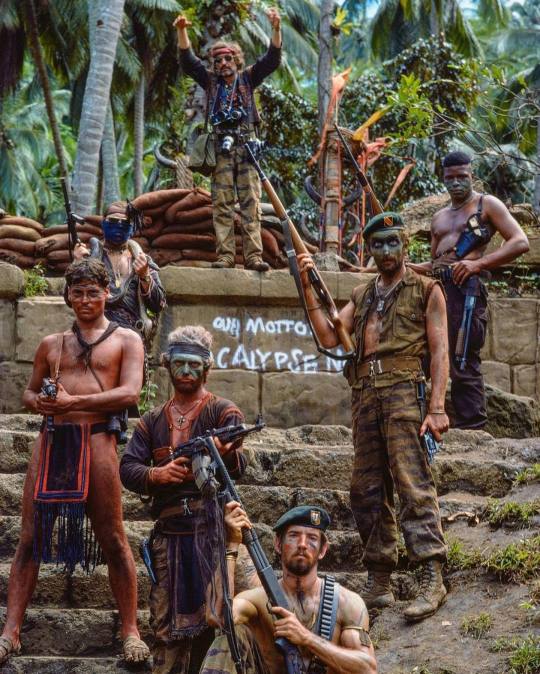
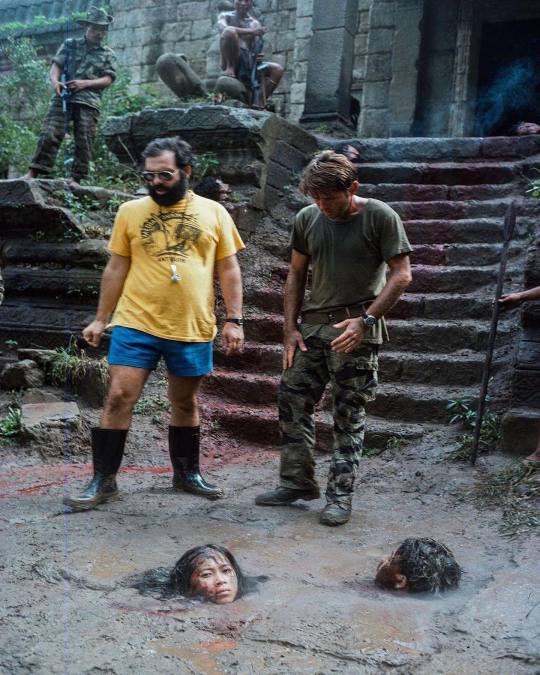
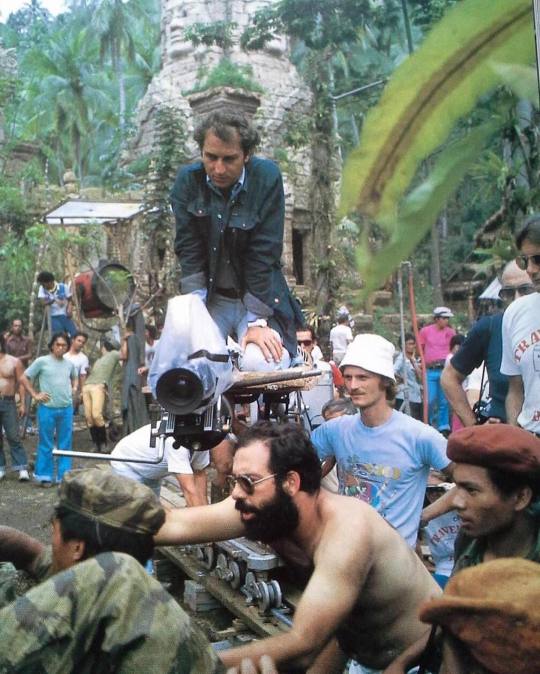
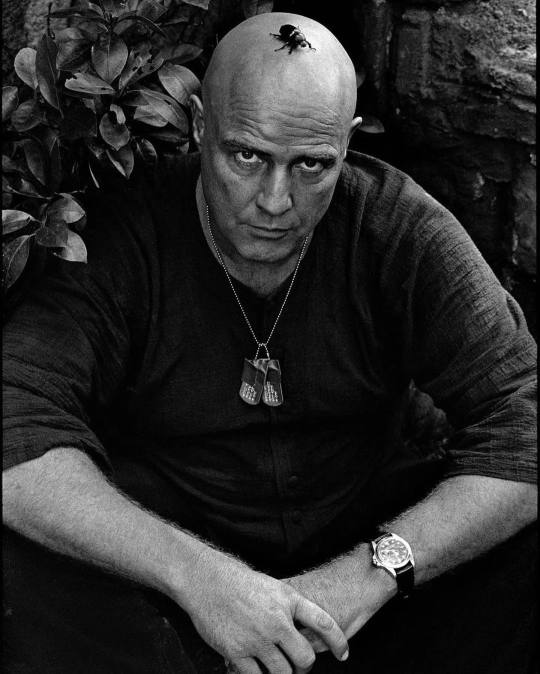
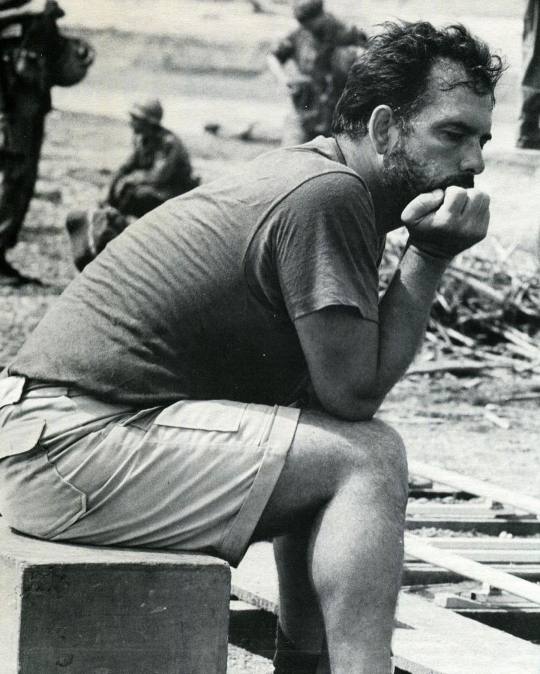
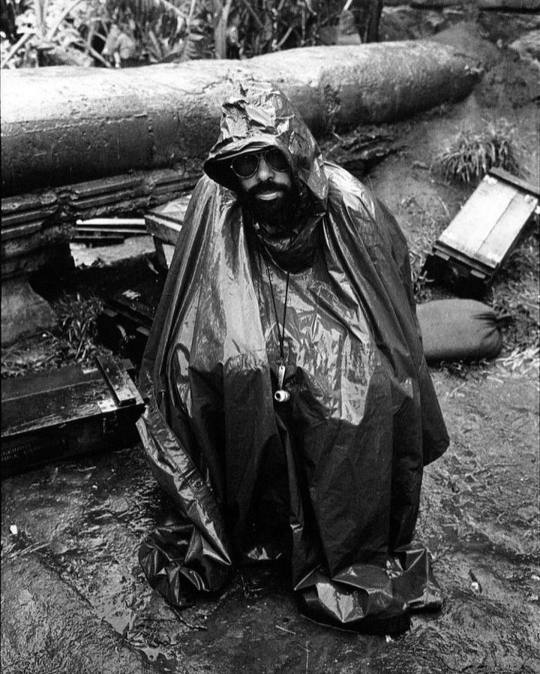
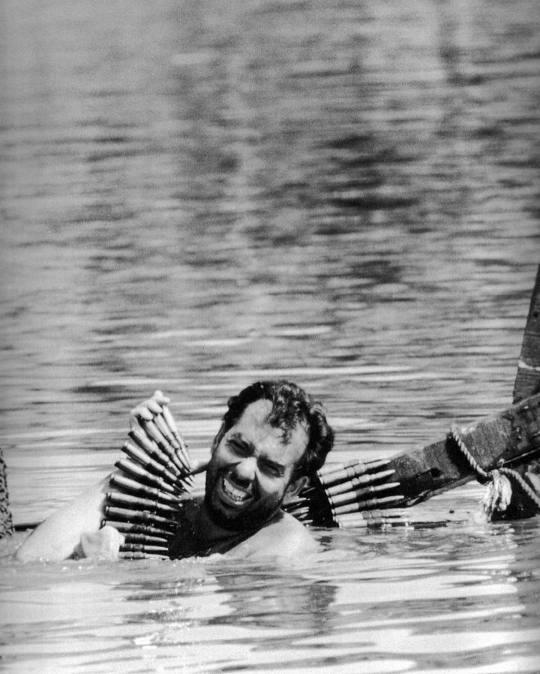
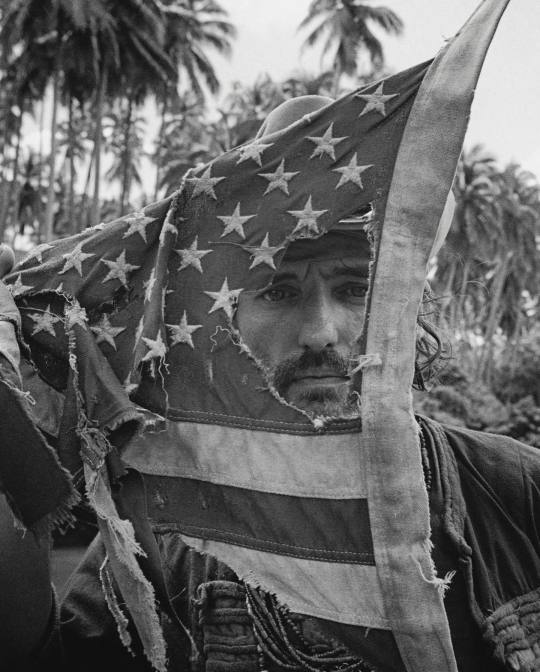
BTS of Apocalypse Now (1979) dir. Francis Ford Coppola
#apocalypse#apocalypse now#bts#1979#francis ford coppola#charlie sheen#marlon brando#vietnam#vietnam war#philippines#america#director#movies#american film#film set#actor#film photography#photography#art#black and white#u.s. army#anti war
17 notes
·
View notes
Text

Hello I’m from Philippines and I’m selling Concentrated Rich Oil Based Perfume from France shipped to Philippines.
This only for 250 pesos you can have a perfume you can’t forget.
#wildlife#interiors#ford#short hair#hairstyle#glitter#haircut#home#sketch#fotd#perfume#scents#scent kink#scene#scenery#philippines#i love you#love#quality#love quotes#black love#self love#self care#supermom#science
0 notes
Text
Investment Pledges to Malaysia after the Asia Pacific Economic Forum (APEC) reached Usd 13 billion while the Philippines could only claim Usd 672 million from the same Forum. Why are US Companies “Pledging” more to China’s close Ally Malaysia than to the supposed Ally of the US, the Philippines?
#philippines#malaysia#asia pacific economic corridor apec#united states us#anwar ibrahim#bong bong marcos bbm#abbott laboratories#mondelez international#amsted rail#hematogenix#perkinelmer#ford motor company#boeing#amazon web services#enovix#lam research#google#enovix cooperation#microsoft#tiktok#tpg incorporated
1 note
·
View note
Text
If the Nuremberg Laws were Applied…
-Noam Chomsky
Delivered around 1990
If the Nuremberg laws were applied, then every post-war American president would have been hanged. By violation of the Nuremberg laws I mean the same kind of crimes for which people were hanged in Nuremberg. And Nuremberg means Nuremberg and Tokyo. So first of all you’ve got to think back as to what people were hanged for at Nuremberg and Tokyo. And once you think back, the question doesn’t even require a moment’s waste of time. For example, one general at the Tokyo trials, which were the worst, General Yamashita, was hanged on the grounds that troops in the Philippines, which were technically under his command (though it was so late in the war that he had no contact with them — it was the very end of the war and there were some troops running around the Philippines who he had no contact with), had carried out atrocities, so he was hanged. Well, try that one out and you’ve already wiped out everybody.
But getting closer to the sort of core of the Nuremberg-Tokyo tribunals, in Truman’s case at the Tokyo tribunal, there was one authentic, independent Asian justice, an Indian, who was also the one person in the court who had any background in international law [Radhabinod Pal], and he dissented from the whole judgment, dissented from the whole thing. He wrote a very interesting and important dissent, seven hundred pages — you can find it in the Harvard Law Library, that’s where I found it, maybe somewhere else, and it’s interesting reading. He goes through the trial record and shows, I think pretty convincingly, it was pretty farcical. He ends up by saying something like this: if there is any crime in the Pacific theater that compares with the crimes of the Nazis, for which they’re being hanged at Nuremberg, it was the dropping of the two atom bombs. And he says nothing of that sort can be attributed to the present accused. Well, that’s a plausible argument, I think, if you look at the background. Truman proceeded to organize a major counter-insurgency campaign in Greece which killed off about one hundred and sixty thousand people, sixty thousand refugees, another sixty thousand or so people tortured, political system dismantled, right-wing regime. American corporations came in and took it over. I think that’s a crime under Nuremberg.
Well, what about Eisenhower? You could argue over whether his overthrow of the government of Guatemala was a crime. There was a CIA-backed army, which went in under U.S. threats and bombing and so on to undermine that capitalist democracy. I think that’s a crime. The invasion of Lebanon in 1958, I don’t know, you could argue. A lot of people were killed. The overthrow of the government of Iran is another one — through a CIA-backed coup. But Guatemala suffices for Eisenhower and there’s plenty more.
Kennedy is easy. The invasion of Cuba was outright aggression. Eisenhower planned it, incidentally, so he was involved in a conspiracy to invade another country, which we can add to his score. After the invasion of Cuba, Kennedy launched a huge terrorist campaign against Cuba, which was very serious. No joke. Bombardment of industrial installations with killing of plenty of people, bombing hotels, sinking fishing boats, sabotage. Later, under Nixon, it even went as far as poisoning livestock and so on. Big affair. And then came Vietnam; he invaded Vietnam. He invaded South Vietnam in 1962. He sent the U.S. Air Force to start bombing. Okay. We took care of Kennedy.
Johnson is trivial. The Indochina war alone, forget the invasion of the Dominican Republic, was a major war crime.
Nixon the same. Nixon invaded Cambodia. The Nixon-Kissinger bombing of Cambodia in the early ’70’s was not all that different from the Khmer Rouge atrocities, in scale somewhat less, but not much less. Same was true in Laos. I could go on case after case with them, that’s easy.
Ford was only there for a very short time so he didn’t have time for a lot of crimes, but he managed one major one. He supported the Indonesian invasion of East Timor, which was near genocidal. I mean, it makes Saddam Hussein’s invasion of Kuwait look like a tea party. That was supported decisively by the United States, both the diplmatic and the necessary military support came primarily from the United States. This was picked up under Carter.
Carter was the least violent of American presidents but he did things which I think would certainly fall under Nuremberg provisions. As the Indonesian atrocities increased to a level of really near-genocide, the U.S. aid under Carter increased. It reached a peak in 1978 as the atrocities peaked. So we took care of Carter, even forgetting other things.
Reagan. It’s not a question. I mean, the stuff in Central America alone suffices. Support for the Israeli invasion of Lebanon also makes Saddam Hussein look pretty mild in terms of casualties and destruction. That suffices.
Bush. Well, need we talk on? In fact, in the Reagan period there’s even an International Court of Justice decision on what they call the “unlawful use of force” for which Reagan and Bush were condemned. I mean, you could argue about some of these people, but I think you could make a pretty strong case if you look at the Nuremberg decisions, Nuremberg and Tokyo, and you ask what people were condemned for. I think American presidents are well within the range.
Also, bear in mind, people ought to be pretty critical about the Nuremberg principles. I don’t mean to suggest they’re some kind of model of probity or anything. For one thing, they were ex post facto. These were determined to be crimes by the victors after they had won. Now, that already raises questions. In the case of the American presidents, they weren’t ex post facto. Furthermore, you have to ask yourself what was called a “war crime”? How did they decide what was a war crime at Nuremberg and Tokyo? And the answer is pretty simple. and not very pleasant. There was a criterion. Kind of like an operational criterion. If the enemy had done it and couldn’t show that we had done it, then it was a war crime. So like bombing of urban concentrations was not considered a war crime because we had done more of it than the Germans and the Japanese. So that wasn’t a war crime. You want to turn Tokyo into rubble? So much rubble you can’t even drop an atom bomb there because nobody will see anything if you do, which is the real reason they didn’t bomb Tokyo. That’s not a war crime because we did it. Bombing Dresden is not a war crime. We did it. German Admiral Gernetz — when he was brought to trial (he was a submarine commander or something) for sinking merchant vessels or whatever he did — he called as a defense witness American Admiral Nimitz who testified that the U.S. had done pretty much the same thing, so he was off, he didn’t get tried. And in fact if you run through the whole record, it turns out a war crime is any war crime that you can condemn them for but they can’t condemn us for. Well, you know, that raises some questions.
I should say, actually, that this, interestingly, is said pretty openly by the people involved and it’s regarded as a moral position. The chief prosecutor at Nuremberg was Telford Taylor. You know, a decent man. He wrote a book called Nuremberg and Vietnam. And in it he tries to consider whether there are crimes in Vietnam that fall under the Nuremberg principles. Predictably, he says not. But it’s interesting to see how he spells out the Nuremberg principles.
They’re just the way I said. In fact, I’m taking it from him, but he doesn’t regard that as a criticism. He says, well, that’s the way we did it, and should have done it that way. There’s an article on this in The Yale Law Journal [“Review Symposium: War Crimes, the Rule of Force in International Affairs,” The Yale Law Journal, Vol. 80, #7, June 1971] which is reprinted in a book [Chapter 3 of Chomsky’s For Reasons of State (Pantheon, 1973)] if you’re interested.
I think one ought to raise many questions about the Nuremberg tribunal, and especially the Tokyo tribunal. The Tokyo tribunal was in many ways farcical. The people condemned at Tokyo had done things for which plenty of people on the other side could be condemned. Furthermore, just as in the case of Saddam Hussein, many of their worst atrocities the U.S. didn’t care about. Like some of the worst atrocities of the Japanese were in the late ’30s, but the U.S. didn’t especially care about that. What the U.S. cared about was that Japan was moving to close off the China market. That was no good. But not the slaughter of a couple of hundred thousand people or whatever they did in Nanking. That’s not a big deal.
447 notes
·
View notes
Text
tumblr folks being surprised that Megalomaniac Ford is still a silly goose despite his dramatic display of being a villain made me realize u guys dont see the shit i yap abt him on twt
so here are some screenshots of not-so-important MM!Ford details
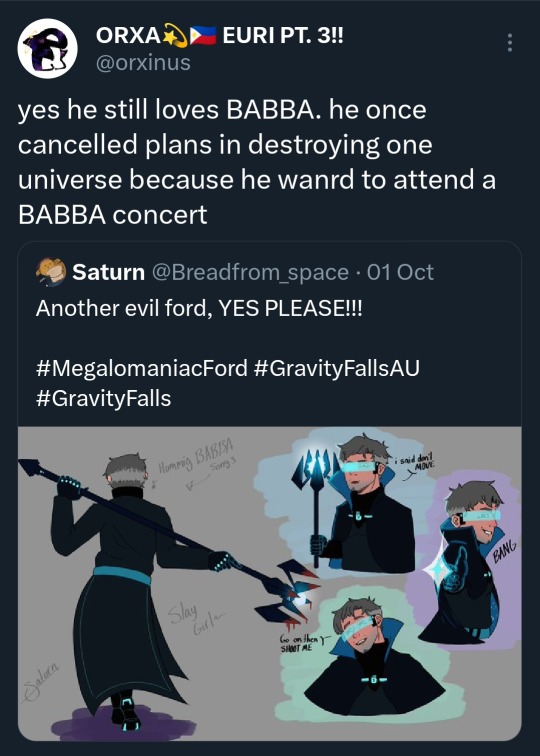
art cred here




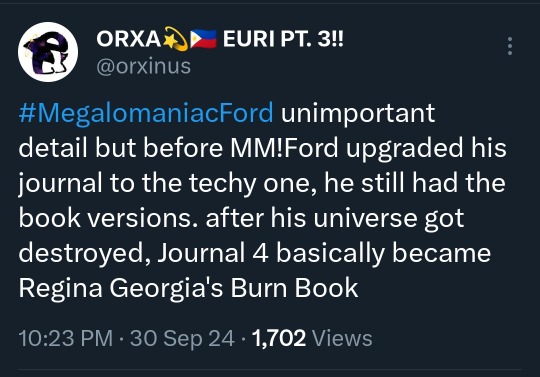

Translation: fun fact about MM!Ford is that sometimes he comes here to the Philippines to really feel like a God since he's very tall in comparison to us since Filipinos are short as hell
209 notes
·
View notes
Text
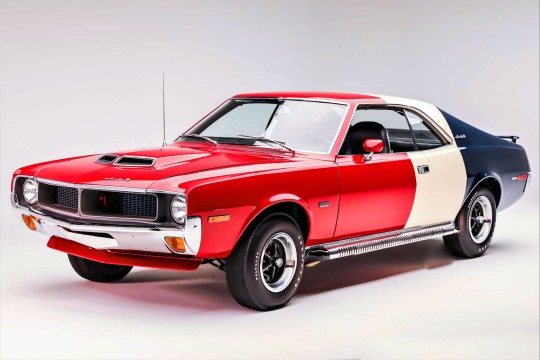
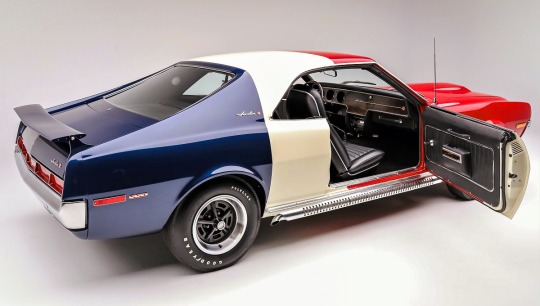
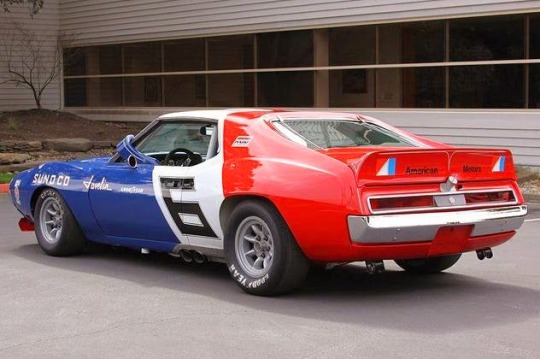
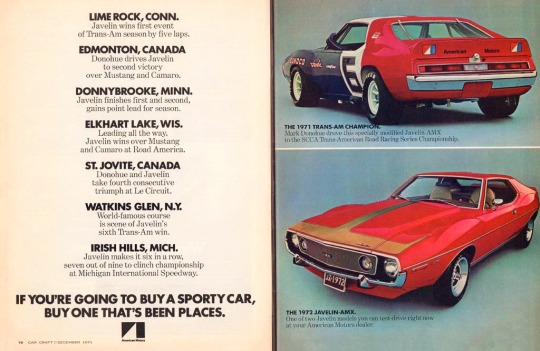
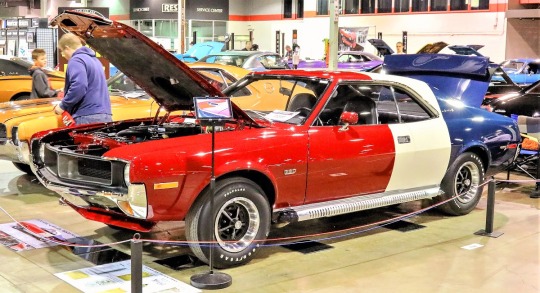
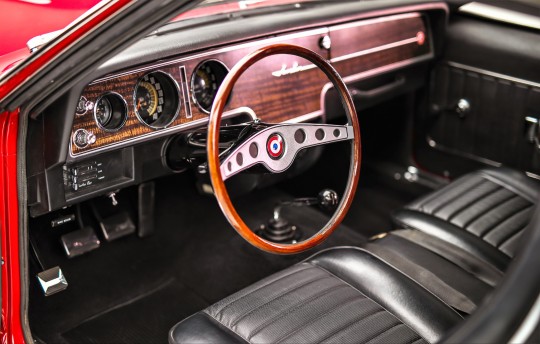


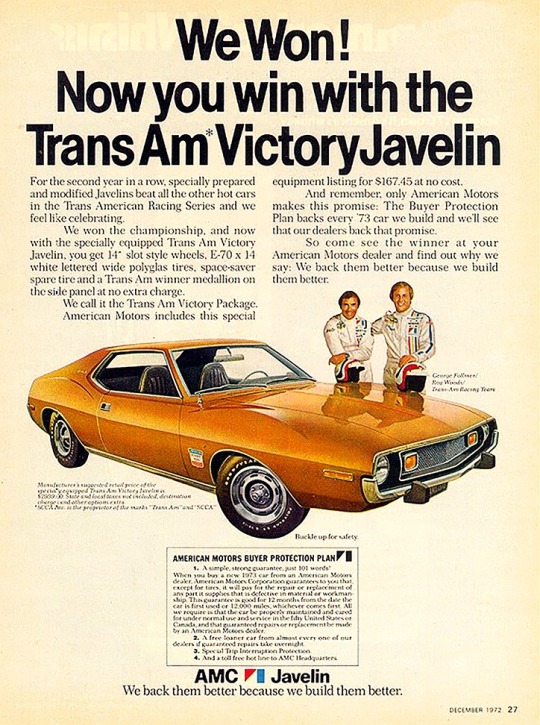
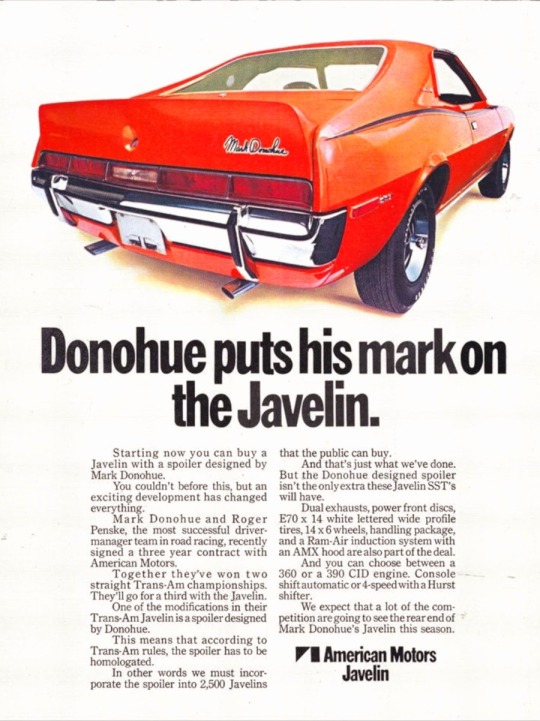
🇺🇲 Step back in time and experience the roar of the iconic AMC Javelin, a true legend of American muscle cars! Introduced in 1967 by American Motors Corporation (AMC), the Javelin was a front-engine, rear-wheel-drive, two-door hardtop automobile manufactured across two generations, spanning from 1968 through 1970 and then from 1971 through 1974 model years. It was designed to compete in the pony car market segment against rivals like the Ford Mustang and Chevrolet Camaro.
🚗💨 The AMC Javelin burst onto the scene in 1968, showcasing a sleek design and powerful engines. Styled by Dick Teague, the Javelin offered a range of trim and engine levels, from economical pony car variants to high-performance muscle car models. Its distinctive appearance, featuring a long hood and aggressive stance, turned heads on the streets and racetracks alike.
🏭 Besides being manufactured in Kenosha, Wisconsin, Javelins were also assembled under license in Germany, Mexico, the Philippines, Venezuela, and Australia, showcasing its global reach. American Motors even offered discounts to U.S. military personnel, leading to many Javelins being exported overseas.
🛞 Under the hood, the Javelin packed serious power. It was available with inline-six engines or potent V8s, delivering thrilling acceleration and speed. The AMX variant, equipped with a 6.4-liter V8, boasted over 300 horsepower!
🏆 The AMC Javelin wasn't just about looks—it excelled on the track too. It competed in Trans-Am racing, demonstrating its speed and agility. In fact, the second-generation AMX variant was the first pony car used as a standard vehicle for highway police car duties by an American law enforcement agency. Today, the Javelin's unique style and racing heritage make it a sought-after classic among collectors.
💔 By 1974, the automobile landscape had shifted. While other manufacturers downsized engines in response to changing market demands and fuel shortages, the Javelin's big engine option continued until production ceased in November 1974 amidst the Arab oil embargo and declining interest in high-performance vehicles.
🦅 The AMC Javelin embodies the spirit of American muscle cars, blending style, performance, and affordability. It's a timeless classic that continues to capture the hearts of car enthusiasts everywhere. Get ready to hit the road and experience the thrill of the AMC Javelin!
#brits and yanks on wheels#retro cars#transatlantic torque#vehicle#cars#old cars#brands#companies#automobile#american cars#amc#american motors#american muscle#amc javelin#javelin#muscle car#pony car#race car#trans am#old car#classic cars#car#american auto#automotive#chevrolet camaro#chrysler#wisconsin#kenosha#made in usa#ford mustang
305 notes
·
View notes
Text
My WoC OCs: Thunderstorm Torres and Elijah Torres
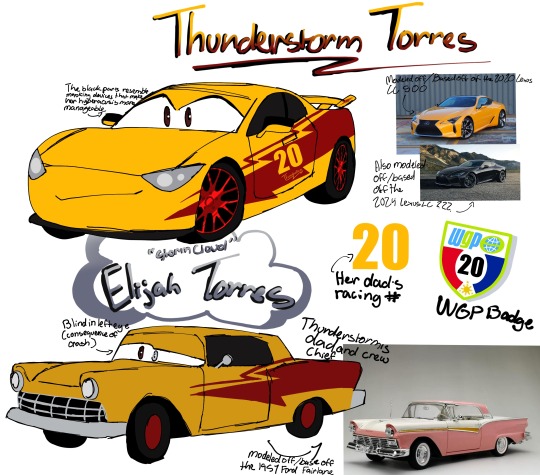
"You bring in the lightning, I bring out the thunder!" Carmelita "Thunderstorm" Torres is a Filipino race car, modeled/based off of both the 2020 Lexus LC 500 and the 2024 Lexus LC 222. She was a champion racer in the Philippines Touring Sports series, before moving on to compete in the Grand Touring Sports series with fellow WGP racer friends Miguel Camino, Nigel Gearsely, Jeff Gorvette and Lewis Hamilton months after the 2011 World Grand Prix. Her former career is singing, which was widely famous for, before quitting when she was 21 years old. Harv was her former agent - since he is a talent agent after all - and was psychologically and emotionally abusive towards her, which is one of the main reasons that led to her quitting and turning to racing. Her top speed is 215 mph, with a Volvo XC90 4.4-litre V8 engine that has 650 hp. She does have a hearing condition called hyperacusis, a condition she had since she was a kid, so she wears special hearing devices that help her make the noises in her surrounding environment much more manageable. Her father, Elijah "Storm Cloud" Torres, is her crew chief in the racing world. He was formerly a legendary racer in the Philippines, whose career ended in a major crash that led him to retire at the age of 50. A year after he retired, he became a commentator for racing by the time Thunderstorm was 18 years old, but once she became a racer, he decided to become her crew chief and pass his knowledge and tricks down to her. He was also the one to give his racing number 20 to her when she moved on to professional racing. His top speed is 200 mph. He is half-blind in his left eye, which is a result of his crash. He is modeled/based off of the 1957 Ford Fairlane. These two have a loving father-daughter bond both on and off the track. Thunderstorm is incredibly grateful that her dad is with her on the track, even if it is as a crew chief, and even more grateful that he's helping her become a great racer. She looks up to him quite a lot, and dreams of becoming a racing legend like him one day.
31 notes
·
View notes
Text




Ford Territory 1.5 Titanium X 2023.
Camera used: Samsung Galaxy J4+ and Huawei Nova Lite
#ford territory#Ford#Territory#Ford Philippines#vehicle#vehicles#SUV#fordphilippines#cabanatuan#philippines
1 note
·
View note
Note
For Stanley, Since u traveled to Philippines which food do u like most? (i love palabok n adobo so much hehe)
and u should bring ford next time! If u ever plan to visit my country! ☺
I loved Adobo and Kare-Kare! And as much as I’d love to go back I am actually banned from there.. soo you’ll just have to come here! And spend lots of money in the Mystery Shack Gift Store!
I’m sure that the Philippines are gorgeous and I’d love to go..however, Stanley used my identity when he went and now, I am also technically banned from there.
#gravity falls x reader#stan pines x reader#stanford x reader#stanley pines x reader#ask ford#ask stan#gravity falls stanford#gravity falls stanley#stan pines#ask gravity falls#stanely pines#stan tumblr#stanblr#stanford pines#grunkle stan#stan#stanley pines#ford asks#ford ask#gravity falls ford#grunkle ford#ford#ford pines#gravity falls asks#gravity falls roleplay#gravity falls
21 notes
·
View notes
Note
Which President, in your opinion, was the most reluctant to seek the position? Which wound up hating it the most by the end of his term?
I am a strong believer that nobody truly becomes President of the United States "reluctantly". That's not exactly the kind of job that seeks you, especially the modern Presidency.
For a significant slice of American history, many of the people nominated for President acted as if they were being called upon to run when, behind-the-scenes, they were very active in building their campaigns and corralling supporters. Until the 20th Century it was frowned upon to openly run for the Presidency, but almost all of the Presidents wanted the gig.
I'd say that George Washington was probably more reluctant than most of his successors and likely would have preferred retiring to Mount Vernon after the Revolution, but I think he also recognized that he was the guy who needed to be the President that set the precedents. I think Ulysses S. Grant would have been perfectly happy to not be President, but once he was elected in 1868 he also wanted to keep the job. He even tried to run for a third term in 1880.
That 1880 election might have been the one case where the winner -- James Garfield -- genuinely wasn't interested in the Presidency at that point. He had gone to the Republican National Convention to support fellow Ohioan John Sherman (and defeat Grant's hopes for a third term) and gained some major attention after giving a well-received speech placing Sherman's name in nomination. When the candidacies of Sherman and James G. Blaine -- another anti-Grant candidate -- stalled, Garfield became a compromise choice and was eventually nominated on the 36th ballot. Garfield was apparently legitimately shocked by the events leading to him leaving Chicago as the GOP nominee.
By most accounts, William Howard Taft was far more interested in a potential seat on the Supreme Court than becoming President. At heart he was a judge and believed himself to be better suited for the judiciary than the Executive Branch. But Taft turned down three offers by Theodore Roosevelt to be appointed to the Supreme Court (in 1902, 1903, and 1906) because he felt obligated to complete his work as Governor-General of the Philippines and then Secretary of War. But Taft's wife desperately wanted him to become President and by the time of President Roosevelt's third offer of a seat on the Court, Taft was already being talked about as Roosevelt's hand-picked successor in the White House. And, as with all other Presidents, once he had a taste for the job, he didn't want to give it up, running for re-election in 1912 against his former friend, Roosevelt.
Gerald Ford is the only other President who hadn't spent a significant portion of his political career with his eyes on the White House. Ford spent nearly a quarter-century in the House of Representatives and his main ambition was to be Speaker of the House, but Republicans weren't able to win control of the House when Ford was in Congressional leadership positions. But even with Ford being a creature of Congress, he did attempt to put himself forward as a nominee for the Vice Presidency, first in 1960 and then in 1968, and Nixon kicked the tires on picking him as his running mate in 1960. No one wants to be Vice President without seeing it as a potential stepping stone to the Presidency, particularly at that point in history before Vice Presidents were empowered with some real influence within the Administrations they served in.
As for who wound up hating it by the end of their time in office, I think it's safe to say that John Quincy Adams didn't shed too many tears when he was defeated for re-election in 1828. And I'm sure he wouldn't use the word "hate", but nobody can convince me that George W. Bush wasn't thoroughly ready to escape Washington by late-2007. There were times in 2008 when he seemed like he just wanted to hold a snap election like they have in parliamentary systems and go home to Texas. If some Presidential insider published a book that said that Bush asked if he could just give the keys to the White House to Barack Obama in July 2008, I wouldn't be the least bit shocked.
On the other hand, if there were no term limits, Bill Clinton would have been running for President in every election since 1992 (and the crazy thing is that he's still younger than both of the presumptive 2024 nominees). I'm kind of surprised that he didn't make an effort to repeal the 22nd Amendment in the past 20 years. Clinton loved being President and was trying to find something Presidential to do until minutes before his successor was inaugurated in 2001.
#History#Presidents#Presidential Candidates#Presidential Nominees#Presidential Elections#Presidency#Reluctant Presidents#Politics#Political History#Presidential History#George Washington#President Washington#General Washington#Ulysses S. Grant#President Grant#General Grant#1880 Election#1880 Republican National Convention#James Garfield#President Garfield#William Howard Taft#President Taft#Chief Justice Taft#Gerald Ford#President Ford#John Quincy Adams#JQA#President Adams#George W. Bush#Bush 43
61 notes
·
View notes
Text


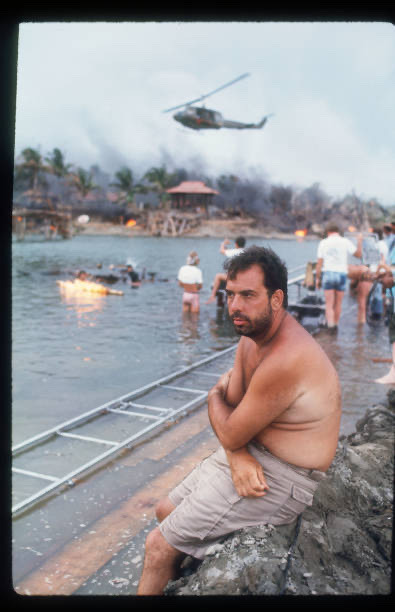
Francis Ford Coppola on location in the Philippines directing APOCALYPSE NOW in 1976.
69 notes
·
View notes
Text
OC Questionnaire
Tagged by: @pralinesims thank you so much Evan!!!! I'm doing two people today 😉
*clears throat* Ahem. *whips out the lore folder in my computer that contains Priscilla and Tony's dossier* Let's start shall we?

NAME: Priscilla Wuest (soon to be hyphenated Harrison again lmao) NICKNAME: Pri, Precy (usually by me; it's the Filipino nickname for Priscilla), Imera (codename) GENDER: Cis woman STAR SIGN: Cancer ♋︎ HEIGHT: 5'6 (167 cm) ORIENTATION: Demisexual NATIONALITY/ETHNICITY: American FAVORITE FRUIT: Dragon fruit (she loves getting those from the Philippines) FAVORITE SEASON: Spring and Summer FAVORITE FLOWER: Baby's breath FAVORITE SCENT: Citrus, Tony's perfume that she's dying to know (but he's not telling her because he made it himself for fun while practicing his magic), Tony's musky scent after his workout (ahem) COFFEE, TEA, or HOT CHOCOLATE: Prefers tea, but indulges in hot chocolate from time to time AVERAGE HOURS OF SLEEP: On mission days, around 6. On a regular day, 8. DOGS or CATS: She doesn't mind both, but they currently have a cat named Moumou! Also does well interacting with farm animals (Lucio Ranch, remember?!) DREAM TRIP: Somewhere tropical, beachy. Somewhere she could wear the hottest head-turning bikini ever, which would make Tony's ego so big NUMBER OF BLANKETS: 1 and warm arms around her RANDOM FACT: Through her biological mother, she has the blood of a Filipino. She only found out when she was bored and used her security clearance to search anything related to her through The Director's terminal. She didn't mind them not telling her, since she doesn't want to know anything about her birthmother.

NAME: Anthony Harrison NICKNAME: Tony GENDER: Cis man STAR SIGN: Aquarius ♒︎ HEIGHT: 5'11 (180 cm) ORIENTATION: Heterosexual NATIONALITY/ETHNICITY: American - British citizenship, born British FAVORITE FRUIT: Cherries FAVORITE SEASON: Summer (for bikini season ahem) and Winter (to warm Priscilla) FAVORITE FLOWER: Rose, Orchids, Baby's breath FAVORITE SCENT: Fresh linen, floral, Tom Ford Black Orchid (Priscilla's perfume) COFFEE, TEA, or HOT CHOCOLATE: TEA AVERAGE HOURS OF SLEEP: 7. Unleashes deep snores that Priscilla uses her power to bend reality in a miniscule level with practiced precision to silence him every night which she had to stop when she saw him choke on his sleep so she learned how to live with it. He's now a white noise machine. DOGS or CATS: Cats DREAM TRIP: Doesn't mind beach vacations (he loves the way Priscilla dresses up for it and would throw himself to her every time) but he'd love to travel somewhere snowy and cold. Like going on Ski resorts! NUMBER OF BLANKETS: 1. He can keep himself warm with his magic, and loves it because Priscilla often throws herself over him when it's winter. Walking heater. RANDOM FACT: He was born on 1987. A little older than Priscilla? Ahem, ahem. (How is this a random fact though?)
Tagging: @changingplumbob @igotsnothing @damseljamsel @kimmiessimmies @nocturnalazure @tedsies @buttertrait @morningglory-sims @holocene-sims and if everyone sees this feel free to be tagged by me! Of course, if you don't feel like it, feel free to pass!
#LOC:Priscilla Wuest#LOC:Priscilla Wuest-Harrison#LOC:Anthony Harrison#the sims 3#sims 3#ts3#tag games
23 notes
·
View notes
Text
explaining why joel victor maneho is a ford taurus:
after i "refined" my selfship with chick, i knew that i wanted my carsona/s/i to be a common & simpler-looking "standard" car to contrast chick being a unique and super decorated racecar
originally joel was a toyota vios which is a very common car in the philippines. however i struggled SO much with drawing that car so i abandoned that design 😭😭
then i watched some video that offhandedly referred to a ford taurus as being a common car in the 2000s and i was like "hey. why cant that be the model of my carsona"
and the rest is history LOL
#joelchick#self ship#selfship#self shipping#selfshipping#self ship community#selfship community#self shipping community#selfshipping community#self insert#pixar cars#cars fandom#carsona
7 notes
·
View notes